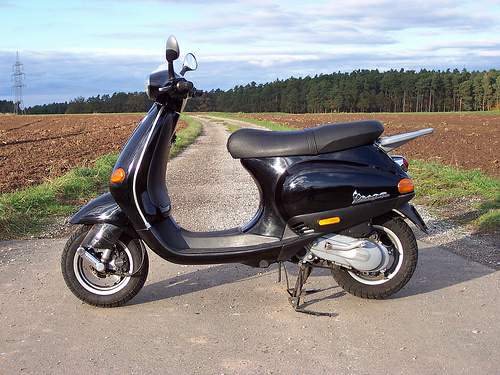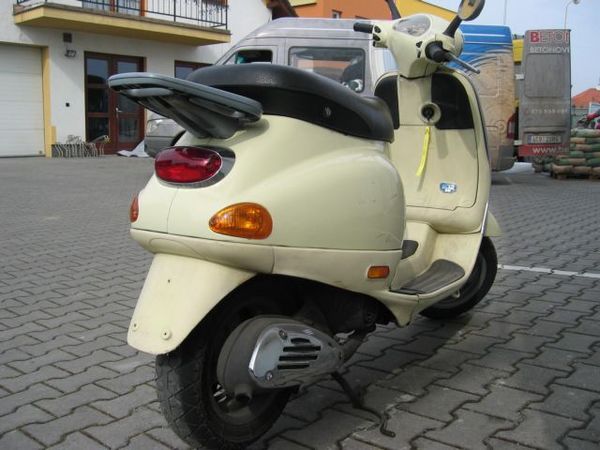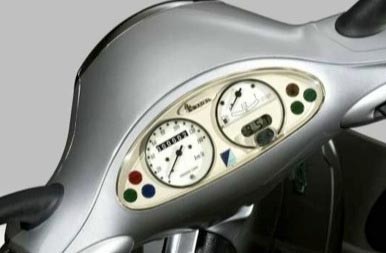Vespa 50 ET2: history, specs, pictures
| Manufacturer | Vespa |
|---|---|
| Production | 1996 |
| Class | Scooter |
| Engine | Single cylinder, two stroke, air cooled, forced |
| Bore / Stroke | 40.6mm x 40.6mm |
| Compression ratio | 11.1:1 |
| Horse Power | 0.94 HP (0.7 KW) @ 7500RPM |
| Torque | 2.95 ft/lbs (4.0 Nm) @ 6500RPM |
| Fuel system | Carburetor |
| Transmission | Gear box: C.V.T. Automatic Final Drive: Belt |
| Suspension | Front: Hydraulic single shock Rear: Hydraulic single shock |
| Brakes | Front: Single disc 200 mm Rear: Drum 110 mm |
| Front Tire | 100/80-10 |
| Rear Tire | 120/70-10 |
| Wheelbase | 50.39 inches (1280 mm) |
| Dimensions | L 69.29 inches (1760 mm) W 26.42 inches (671 mm) |
| Seat height | 31.69 inches (805 mm) |
| Weight | (dry), 92.0 kg (wet) |
| Manuals | Service Manual |
| Tech Specs · Brochures · Reviews · Ads · Videos | |
The Vespa 50 ET2 was a Single cylinder, two stroke, air cooled, forced scooter produced by Vespa in 1996. Max torque was 2.95 ft/lbs (4.0 Nm) @ 6500 RPM. Claimed horsepower was 0.94 HP (0.7 KW) @ 7500 RPM.
Engine
A 40.6mm bore x 40.6mm stroke result in a displacement of just 49.3 cubic centimeters.
Drive
The bike has a C.V.T. Automatic transmission. Power was moderated via the Automatic, dry centrifugal.
Chassis
It came with a 100/80-10 front tire and a 120/70-10 rear tire. Stopping was achieved via Single disc 200 mm in the front and a Drum 110 mm in the rear. The front suspension was a Hydraulic single shock while the rear was equipped with a Hydraulic single shock. The wheelbase was 50.39 inches (1280 mm) long.
1996 - 2005 Vespa 50 ET2
The 50 ET2 ha sthe most sophisticated two-stroke engine ever mass-made produced. The ET2 carries the Piaggio Hi-PER2 engine, also in line with Euro 2 standards as a result of its two-way catalytic converter and Secondary Air System, which feeds fresh air into the exhaust port, igniting unburnt emissions and cleaning up the exhaust pollutants. Fuel-air mixture sucked into the combustion chamber rushes out the transfer ports and helps to drive the previous cycle's burnt gases from the cylinder. Although most of the fresh mixture remains inside, a small percentage sneaks out to the atmosphere through the wide-open exhaust port.Without any physical barrier between the fresh mixture and burnt gases this is unavoidable.


